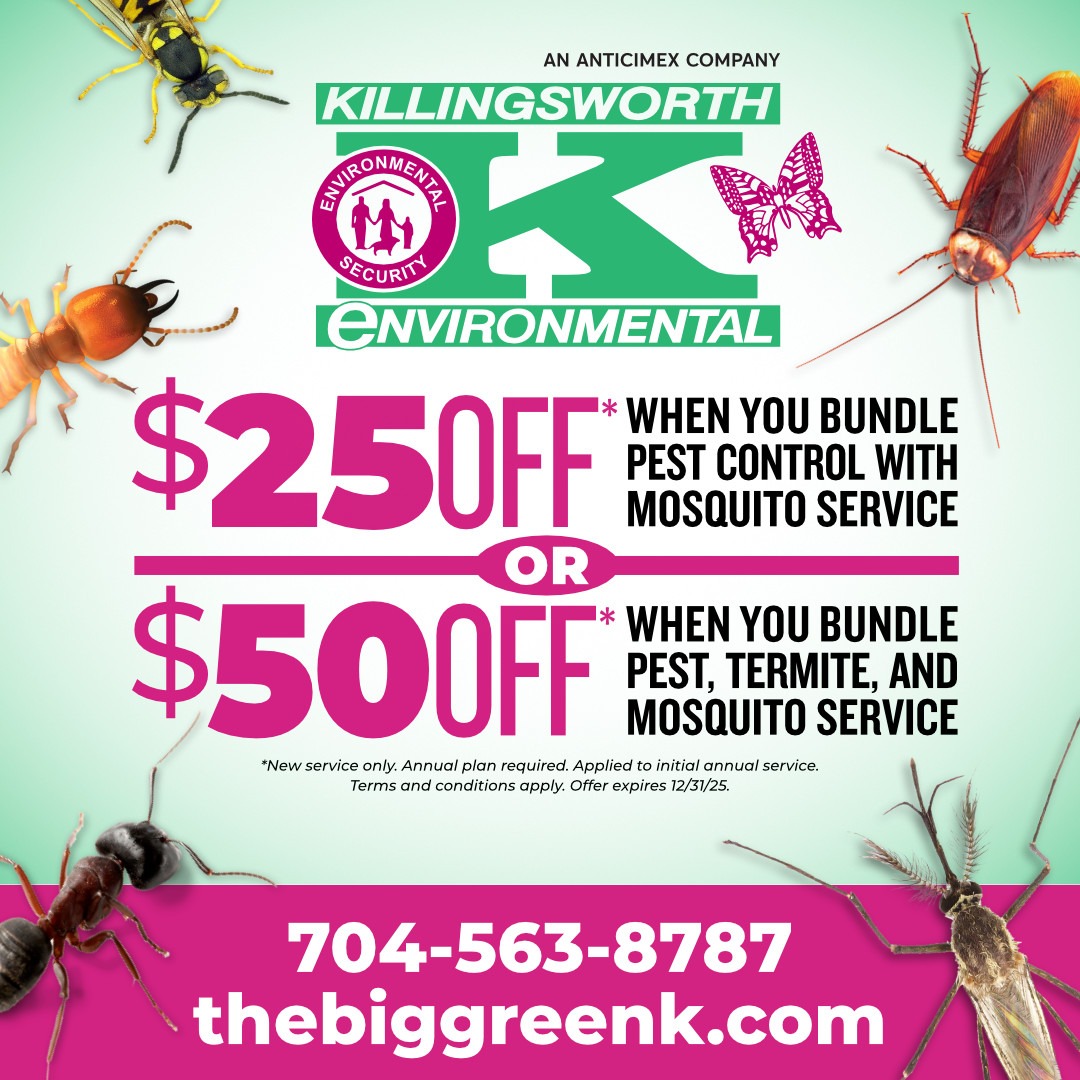A Guide to Spiders in the Carolinas
If you live in the greater Charlotte area, you’ve probably caught some spiders lurking around. The humid climate coupled with the warm temperatures and abundance of vegetation, makes this region a prime habitat for these creepy crawlies. While some spiders reside outdoors, many prefer to nestle themselves in crooks and crannies throughout your household. Once they’ve gotten comfortable, these uninvited guests can create havoc by building webs, laying eggs, and even inflicting unpleasant bites.
Types of Spiders Found in the Carolinas
In the United States alone, there are over 3,000 species of spiders. However, there are just a few key species that tend to infest into homes in the Carolinas.
Carolina Wolf Spiders
Hogna carolinensis, also known as the Carolina wolf spider, is the largest wolf spider in North America. Adult males range from 0.71″ to 0.79″ (18-20mm), while females may reach up to 1.4″ (35mm). In terms of appearance, they’re light brown with dark brown patterns. Male spiders may have orange coloration on the sides, making them easier to identify.
Unlike many other species, these spiders don’t make webs. Rather, they hunt to catch their prey. You’re most likely to spot them during hunting season (which lasts from April to October). When they’re not searching for food, wolf spiders prefer to stay out of the way. They may build their own burrows outside or hide in secluded areas of your home, such as under furniture, behind curtains, or in attic and basement spaces.
Generally, Carolina wolf spiders are not a threat to humans. They are venomous, but their venom is typically used to paralyze prey. If they do end up biting a human, the person may experience swelling and discomfort.
Hobo Spiders
Hobo spiders are native to Europe and Central Asia but migrated to the United States sometime in the 1930s. They’re brownish in color and range from 0.27 to 0.55″ (7-14mm) in length. Due to their ambiguous appearance, it’s common to confuse them with other spiders.
One way to identify hobo spiders is to search for a V-shaped or chevron pattern on their backs. Another method is to observe their webs, which are funnel shaped. After constructing the web, these spiders lie inside the funnel and wait for prey to fall into their trap.
Although hobo spiders are usually associated with the outdoors, they can wind up inside your home. During the late summer and early fall seasons, male hobo spiders sometimes wander into houses as they search for mates. Once inside, they like to nestle in darker, damp areas, such as basements and garages.
Cellar Spiders
Pholcus phalangioides, colloquially known as cellar spiders, are primarily indoor spiders that are found in households across the world. Adult females have a body length of 1/4-5/16″ (7-8mm), while adult males are usually 1/4″ in length. They’re most known for their long legs, which can be almost two inches (50 mm) long in females.
As you can probably guess, cellar spiders like to reside in more secluded spaces. In addition to cellars, they may hide out in basements, attics, and garages. You can usually find them hanging in the corners of the ceiling with their bellies facing upwards.
Generally, cellar spiders are not considered a danger to humans. However, they can be a nuisance. These spiders like to create large, irregular webs, which they use to trap prey. Unlike many other species, they do not consume old webs; instead, they continuously contribute to the same web, leading to an unsavory mess.
Brown Recluse Spiders
Native to the United States, brown recluse spiders are found across the South and Midwest regions. These small brown bugs have distinctive violin-shaped markings and grow to be about 1/2 to 2/3″ (6-22 mm) in length. They’re also recognized for having six eyes (as opposed to eight), which are arranged in pairs in a semicircular fashion.
As the name suggests, these spiders are rather reclusive. They prefer to burrow themselves in dark, secluded areas of your home, such as the attic, basement, or closets. During the day, they may leave their shelter to search for other insects to eat. However, if necessary, they can survive for up to a year without any food or water.
These spiders usually avoid conflict and will run away if threatened. That being said, they are one of the most venomous spiders in the country and can bite if provoked. If you see one of these spiders, it’s strongly recommended that you give them a wide berth and leave it to the Spider Control experts at Killingsworth.
Threats Posed by Spider Infestations
Spiders are more than just an inconvenience. When left unaddressed, spider infestations can lead to health risks. Shedded spider skins and droppings are known allergens and can lead to allergic reactions, leading to respiratory issues such as coughing and sneezing. Furthermore, many species (such as brown recluse spiders and Carolina wolf spiders) bite, resulting in unpleasant reactions. These may range from swelling and redness to nausea and fever.
Female spiders can also lay eggs, which worsens infestations. While the exact egg amount varies among species, a typical house spider may lay hundreds of eggs within a year.
How to Get Rid of Spiders
- Looking to improve spider control? Here are some helpful tips:
- Reduce clutter so that there are minimal spaces for spiders to hide
- Store unused items in airtight containers, so that spiders cannot hide there
- Seal entry points, such as cracks or gaps around windows and doors
- Repair leaks to prevent dampness and moisture accumulation
- Clean up food crumbs and wipe kitchen areas regularly
- Turn off outdoor lights, as these can attract pests that spiders like to eat
- Set spider traps by the doors and other entry points
- Contact a licensed spider exterminator for regular applications
Using a combination of advanced equipment and trusted techniques, our experienced team can eliminate even the toughest of spider infestations. And we can help prevent them from returning. Contact us today to learn more about our state-of-the-art pest management services in the greater Charlotte North Carolina area.
Spider Control FAQs
Spider control involves a combination of good housekeeping, regular inspections, and effective spider extermination methods. Keep your home clean, particularly corners and hard-to-reach areas.
Various factors can attract spiders, including warmth, darkness, and food. If your home has other small insects, spiders will consider it a source of sustenance. Clutter can provide excellent hiding spots, and damp areas attract certain species of spiders, too.
Generally speaking, spiders can live two weeks to two months without food. Factors affecting longevity include weather, the size of the spider, the age of the spider and its species.
Not all spiders are harmful to humans. In the Carolinas, most spiders are harmless and even beneficial, as they prey on other pests. However, some species, like Black Widows and Brown Recluses, can affect human health if they bite.
You should call a professional pest control service if you are seeing large numbers of spiders, locating dangerous species, or facing a recurring infestation. A professional service like Killingsworth Environmental will effectively handle the problem and take measures to prevent future infestations.

